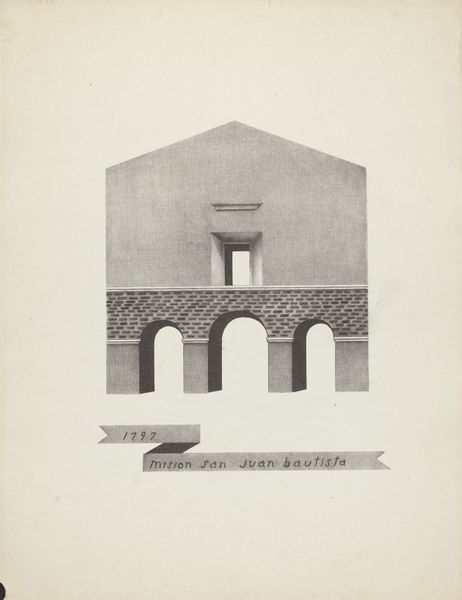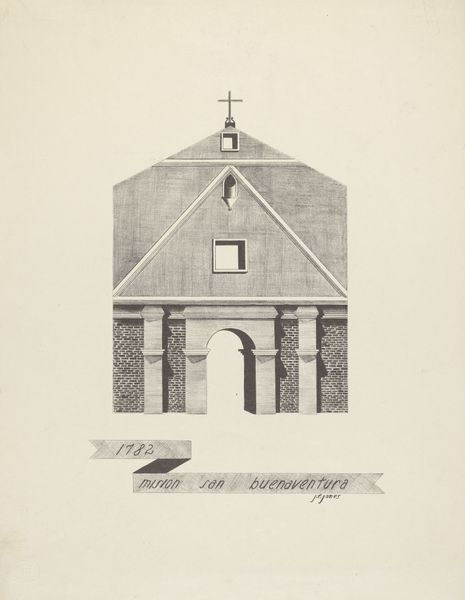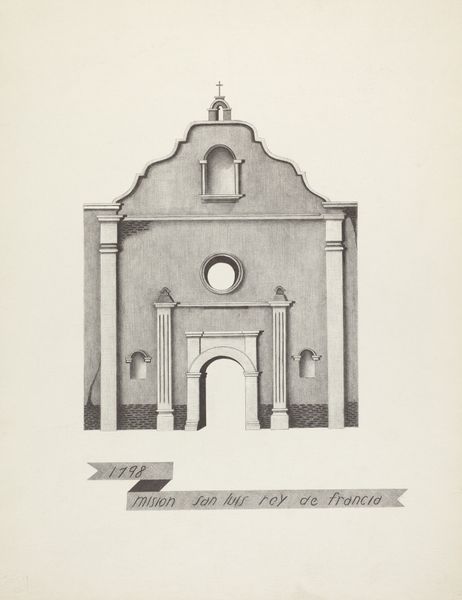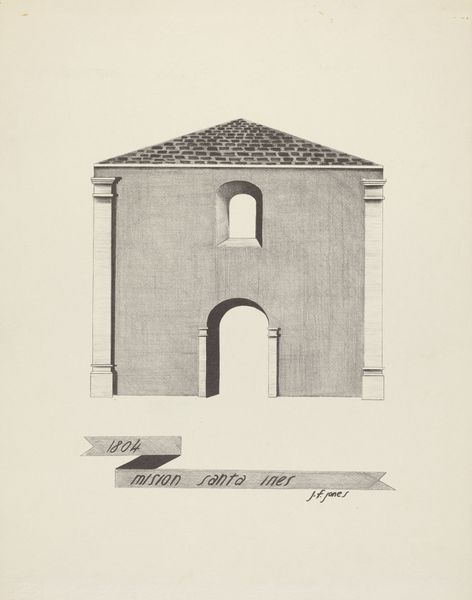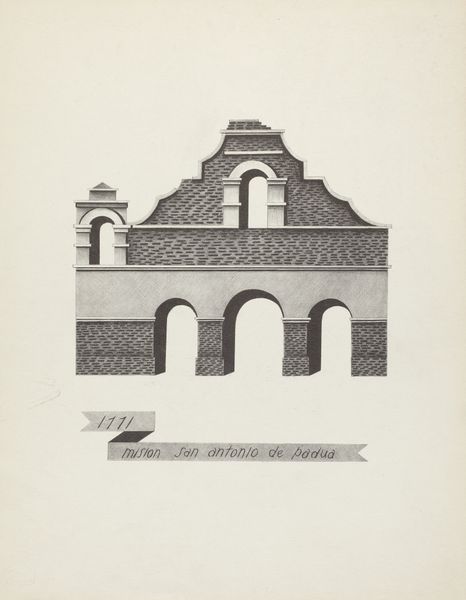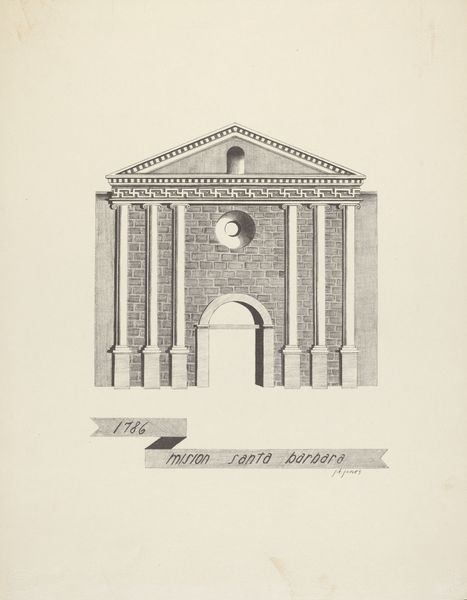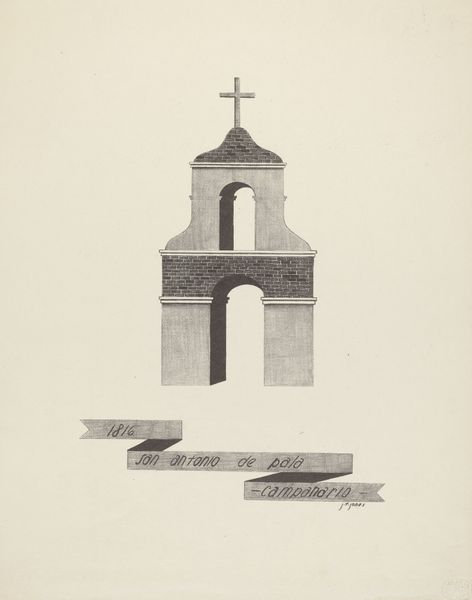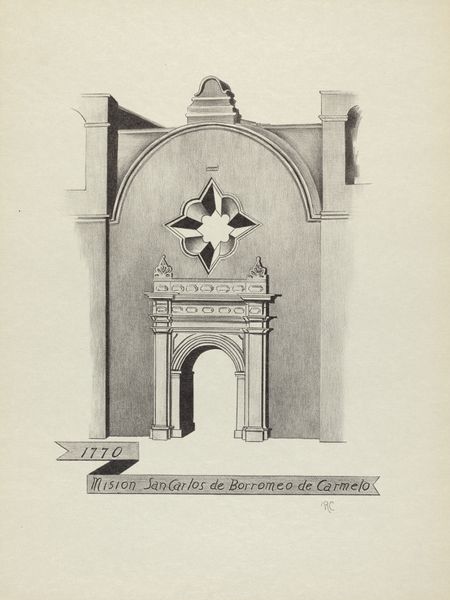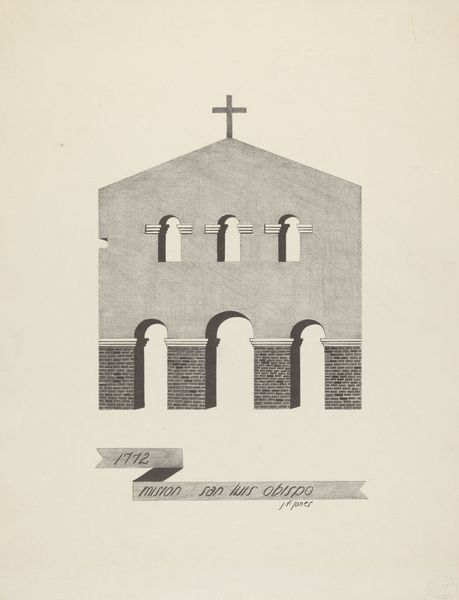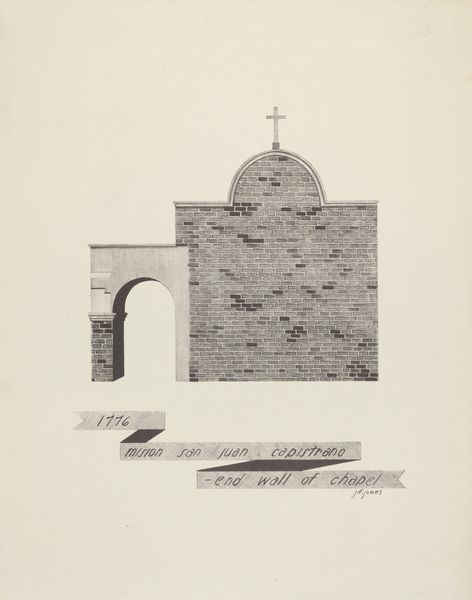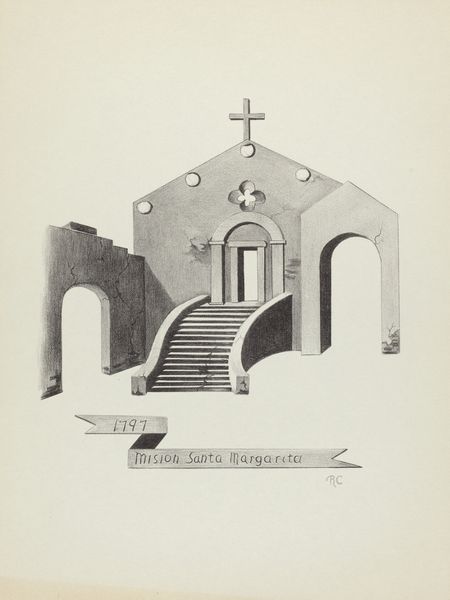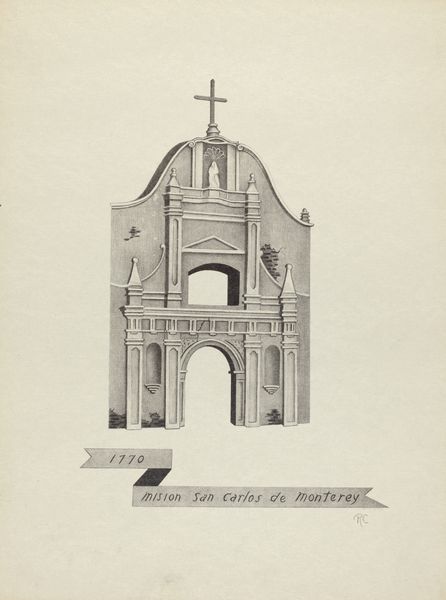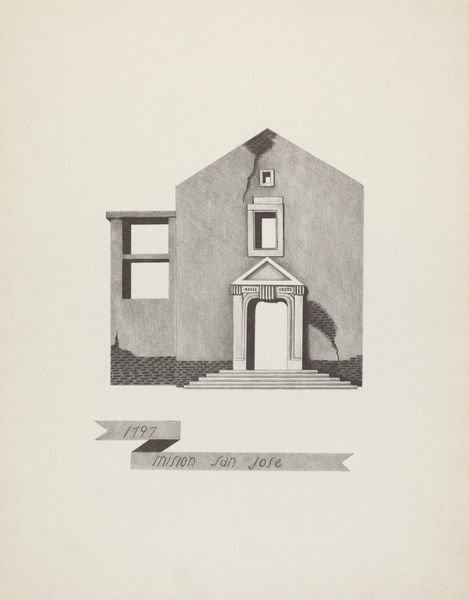
drawing, pencil, architecture
#
drawing
#
geometric
#
pencil
#
architecture
#
realism
Dimensions: overall: 31.2 x 24.9 cm (12 5/16 x 9 13/16 in.)
Copyright: National Gallery of Art: CC0 1.0
Curator: Welcome. Here we have James Jones's drawing, "Mision Santa Clara", completed sometime between 1935 and 1942. Jones renders the facade of the Mission with graphite on paper. Editor: The first impression is of austere symmetry, almost cold in its precision. The grey-scale palette enhances the formal quality, presenting this architecture as pure design. Curator: Observe how Jones uses line and shading to create a sense of depth, despite the flat medium. The balanced composition directs the eye upward, toward the triangular pediment topped by the all-seeing eye symbol. The repetitive use of rectangles, arches and small urns gives an inherent visual rhythm to the facade. Editor: I wonder how Jones, working decades later, grappled with the mission’s legacy? Missions represent not just religious structures, but sites of colonial imposition, violence, and cultural disruption to indigenous communities. The artist's dedication to exact detail, seemingly avoiding personal intervention or commentary, could be seen as sidestepping any kind of critical reevaluation. Curator: Or perhaps it speaks to the transcendental nature of the architectural form itself, lifted from the messy currents of politics and situated within a discourse of geometry, structure and permanence? Jones reduces a complex social reality to its abstract components. Editor: But can we really separate form from content, especially when the content is about structures built to facilitate power dynamics and historical oppression? Maybe Jones' hyperrealism serves as a reminder of these structures that continue to dominate the California landscape and societal imagination. Curator: It could be seen as both a formal appreciation of design, and as you mention, a documentation of power and presence. Editor: In the end, this work highlights how something can look so carefully rendered and appear simple at first glance, while simultaneously speaking to larger narratives about design, colonization and social implications.
Comments
No comments
Be the first to comment and join the conversation on the ultimate creative platform.
